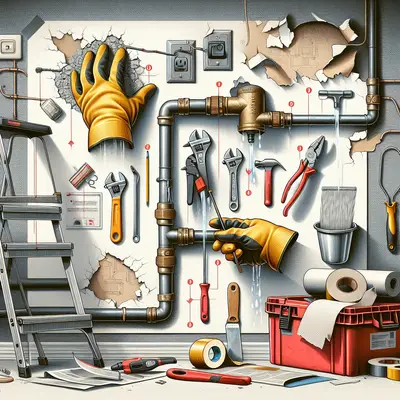1. Recognize the Problem
The first step to solving any problem is acknowledging its existence. Sometimes, signs of wear and tear are obvious, like a leaky faucet or a squeaky door. Other times, they may be subtle and hard to spot. Make a habit of regularly checking your home for any signs of damage or deterioration.
2. Assess the Severity
Once you've identified a problem, the next step is to assess its severity. Is it a minor issue that you can handle yourself, or does it require professional intervention? For instance, a small patch of mold on the bathroom ceiling can be cleaned up with vinegar and water. But extensive mold growth throughout your home might require professional remediation.
3. Gather Your Tools
You don't need to be a professional handyman to do simple home repairs. However, you do need some basic tools. A toolkit with a hammer, screwdriver set, pliers, wrenches, and a tape measure is a good start. As you tackle more projects, you'll learn which additional tools you need. Remember, investing in good-quality tools will pay off in the long run.
4. Do Your Research
Before you start any repair work, take time to research and understand the process. There are numerous resources available online, including video tutorials, blog posts, and forums where you can ask questions. Make sure you understand each step of the repair before you begin. This can help you avoid mistakes and potential damage.
5. Carry Out the Repair
Now that you're prepared, it's time to get your hands dirty. Follow the steps you've researched, taking your time to make sure you do each one correctly. Don't rush through the process. If you encounter any difficulties, don't hesitate to seek help. Remember, it's okay to call in a professional if the task becomes too challenging.
Conclusion
Home repair doesn't have to be daunting. With a little bit of knowledge and the right tools, you can tackle most common problems. This 5-step guide should help you navigate through the process with confidence. Remember, the key is to recognize problems early, assess their severity, gather the right tools, do your research, and then carry out the repair. Happy DIYing!



